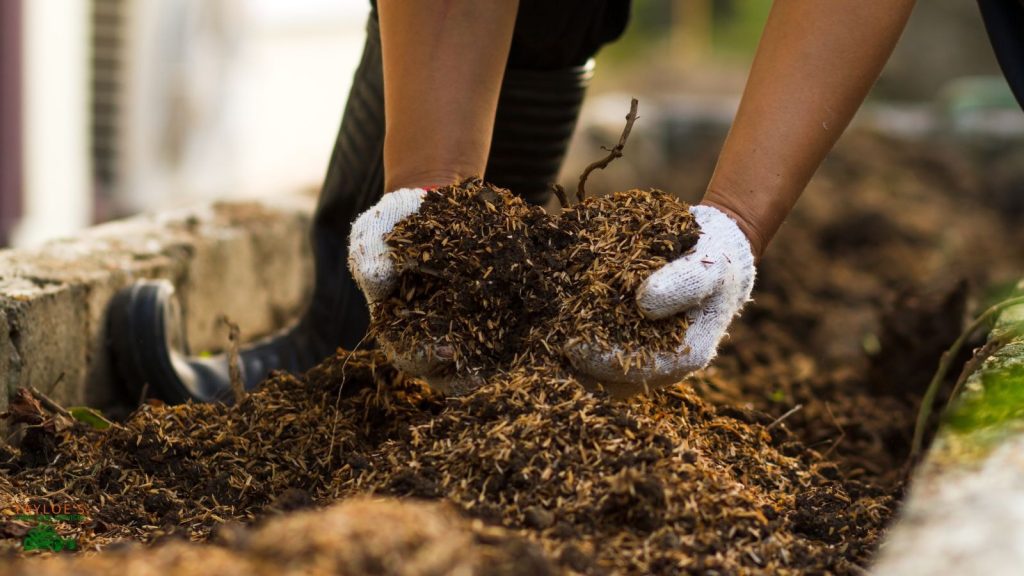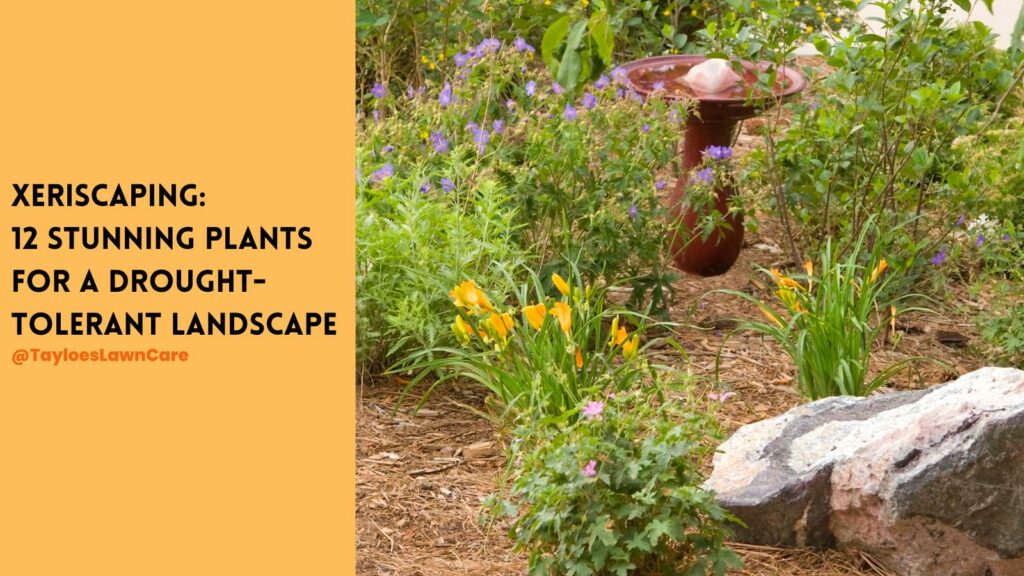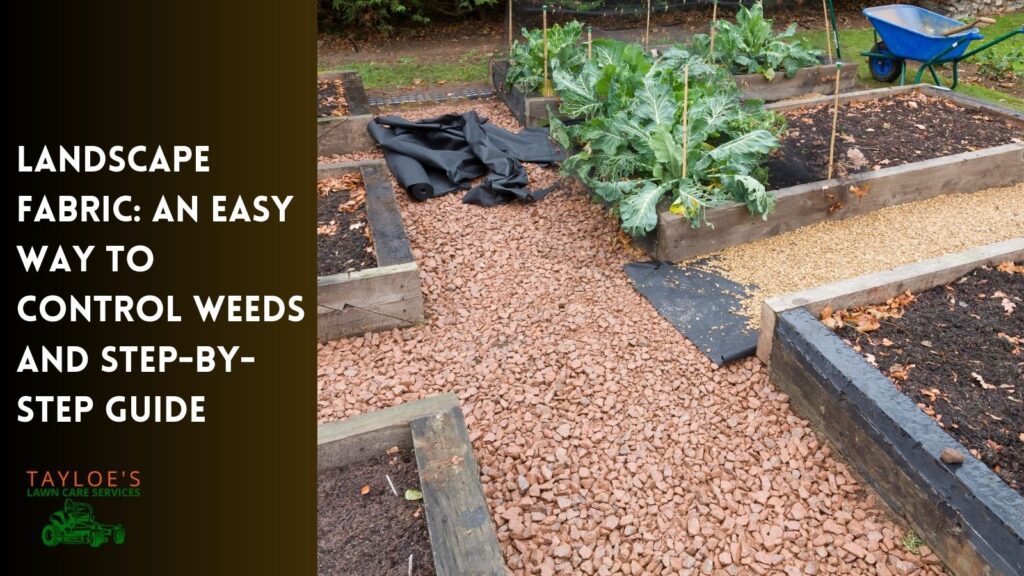Last Updated on: 18th March 2025, 12:58 pm

Let’s help you fine tune your knowledge of organic matter.
Organic compost is a wonderful addition to any garden. It provides excellent nutrition for flowers, food, and herbs. These nitrogen-rich materials can make everything grow beautifully without adding chemical fertilizers. It can also be a money saver – you are composting fruit and vegetable scraps that you’d otherwise toss in the trash, sparing you the cost of commerical weed-n-feed products. But I still question: Are newspapers organic compost or synthetics?
I started researching the organic composting process after a friend asked me about layering newspapers in her flower beds for organic weed control. The process is called sheet composting or lasagna composting; the names refer to layering newspaper on top of the soil where it decomposes in place.
It seemed like a reasonable idea.
Then I started recalling friends in my hometown of Erie, PA, whose parents worked at the local paper mill. Many of those parents died from various cancers. Was that because of the asbestos furnaces, chemical manufacturing processes, or a combination? My opinion/educated guess is probably a combination. Some had lung cancer, likely from the asbestos in the facility. But others had brain or other deadly organ cancers.
That got me wondering whether newsprint is technically organic material.
It turns out that newspapers are not organic. Newspapers undergo a long chemical process, transforming from wood chips to printable paper. Is that what my friend wants for her finished compost? I doubt it – she’s a very concerned person in terms of clean eating and avoiding cancer.
This article might get a bit dull or science-y at times. As a science copywriter by trade, I’ll own it and try to keep explanations simple.
I’ve rounded up some information on the newspaper production process and possible added chemicals or genetically modified ingredients lurking in the newspaper. These disqualify it from being classified among other organic materials. Once an organic gardener learns the chemicals involved, they may keep it out of their clean compost piles.
The Standards for Organic Certification in the United States
To understand why newspapers probably don’t meet organic composting standards, let’s first explore the USDA’s National Organic Program certification guidelines. Understanding the long, arduous process to become certified for anyone who wants to make compost from organic materials is critical.
Organic certification is a process by which a certifying body verifies that a product or operation complies with organic standards. Organic certification assures consumers that the product was grown, processed, and handled according to USDA standards for gardening, farming, and food production.
Here’s a breakdown of the main components of organic certification:
1. No Synthetic Chemicals
Organic certification requires that crops are grown without synthetic pesticides, herbicides, fertilizers, or genetically modified organisms (GMOs). This also applies to soil and water management practices. In other words, no artificial inputs are allowed during the production process.
2. Natural Soil Fertility Management
Organic certification emphasizes natural ways to build soil health, such as using compost, crop rotation, green manure, and cover crops instead of synthetic fertilizers. Organic operations must prioritize soil fertility and sustainability to retain nutrients, prevent erosion, and improve soil structure.
3. Animal Welfare Standards
Organic certification requires humane treatment and access to natural living conditions for livestock. Animals must have outdoor access and be fed an organic diet free of antibiotics, hormones, and synthetic additives. Organic standards also prohibit the use of GMOs in animal feed.
4. No GMOs (Genetically Modified Organisms)
Certified organic products must be entirely free of genetically modified ingredients or GMOs. This means that farmers cannot use genetically modified seeds, crops, or ingredients in their operations, and they must take measures to prevent contamination from neighboring farms.
5. Rigorous Record-Keeping and Inspections
To maintain organic certification, farms and processing facilities must undergo regular inspections and maintain detailed records of their production practices, inputs, and handling procedures. These records ensure transparency and traceability of the entire supply chain, allowing certifying bodies to confirm their compliance.
6. Pest and Weed Control Through Natural Means
Organic certification allows only natural methods for managing pests, weeds, and diseases. This includes using biological pest controls, such as beneficial insects, natural predators, crop rotation, and mechanical weeding. Some non-synthetic pesticides are allowed as a last resort and must be approved by USDA.
7. Environmental Stewardship
Certified organic operations must actively protect natural resources, supporting biodiversity and maintaining ecological balance. Practices that harm the environment, like soil degradation or excessive water use, are discouraged.
Only after meeting all the above guidelines can an ag producer apply to undergo the rigorous certification process.
Now, you might ask: What about regarding composting my compost pile? Here’s a direct definition from the National Organic Program:
The National Organic Program (NOP) states that mulch is any non-synthetic material, such as wood chips, leaves, or straw, or any allowed synthetic material, such as newspaper or plastic that serves to suppress weed growth, moderate soil temperature, or conserve soil moisture.
Here, you have it directly from the federal authorities.USDA may classify them as organic, but they are synthetics in your compost bins. Newspapers may be less harmful than chemicals to suppress weeds or for tossing into compost piles.
This baffles the mind, as common sense organic composting ingredients don’ts include adding synthetic materials. Is USDA saying that organic compost is actually partially synthetic when you purchase it at a premium cost from a garden center?
Chemicals Used in the Newspaper Production Process
Using newspaper as mulch has long been a popular way for gardeners to recycle materials, suppress weeds, and help retain moisture in the soil. However, despite its benefits, the newspaper is a synthetic material. While it’s made from natural wood fibers, paper production relies on chemicals. Here’s a closer look at what makes newspaper mulch less than purely organic.
1. The Chemical Processing of Wood into Pulp
Turning wood into paper is more complex than simply chopping and pressing wood. To create the soft, flexible fibers needed for newspaper, manufacturers use chemicals to break down wood fibers in a process called pulping. There are two main pulping methods, each involving distinct chemicals that may leave residues in the paper.
Sulfur Compounds: In the pulping process, compounds like sulfuric acid and sodium sulfite help dissolve lignin, which binds wood fibers. This makes the pulp more pliable and adds a chemical component to the final product.
Sodium Hydroxide (Caustic Soda): The kraft process, another standard method, uses caustic soda to dissolve non-cellulose materials in wood. This process effectively breaks down the wood and adds chemical residues that may linger in the paper.
These chemicals are essential to creating the newspaper we know today, but they add elements not naturally present in raw wood or plant-based mulches. Some organic gardeners consider these chemicals foreign additions.
2. Bleaching Agents for Color and Brightness
Bleaching agents lighten the pulp and remove the natural brown tint of wood. Even if the bleaching is minimal, it introduces additional chemicals, such as:
Hydrogen Peroxide: A safer and more environmentally friendly bleaching agent than chlorine, hydrogen peroxide is often used to whiten paper fibers.
Oxygen-Based Bleaches: Oxygen compounds can whiten paper without as many harmful byproducts. These bleaches are less toxic than traditional chlorine but aren’t naturally found in organic mulch materials.
Historically, chlorine was used as a bleaching agent, although it’s now less common in the United States due to its environmental impact. That begs another question: Was the newsprint itself that you plan to toss in the compost bin made in the USA according to our standards or in a country without guardrails?
Nonetheless, modern bleaching processes still involve synthetic compounds, which can affect the purity of the newspaper mulch.
3. Sizing Agents for Durability
To give the newspaper its unique feel and durability, sizing agents are added to the pulp to make it less absorbent and more moisture-resistant. These agents ensure that printed ink won’t immediately bleed into the fibers and cause smudging. The most commonly used sizing agents include:
Starch and Rosin: Natural substances, such as starch, are sometimes used as sizing agents, but synthetic alternatives are also common. The synthetic alternates include alkyl ketene dimer (AKD); alkenyl succinic anhydride (ASA); and Polyvinyl Alcohol (PVA).
Synthetic Sizing Agents: These chemicals improve paper’s water resistance and may include formaldehyde, recognized by the American Cancer Society as carcinogenic. However, they introduce additional synthetic compounds into the final product, even if in small quantities.
These agents help produce readable and durable paper but aren’t beneficial in an organic compost bin. Organic mulches generally work to enhance soil health and water absorption. Sizing agents make newspaper less absorbent, meaning it may not interact with soil moisture in the same way as purely natural mulches like manure, pine shavings, straw, etc.
4. Fillers for Opacity and Smoothness
Fillers are added to the newspaper pulp to create an even, smooth finish. These fillers help make the paper more opaque and enhance the texture, making it easier to print. Some commonly used fillers include:
Kaolin Clay and Calcium Carbonate: These natural minerals give the paper a more solid, white appearance and are widely used in the paper industry.
While these minerals may seem benign, they alter the soil chemistry slightly if they leach out. Organic mulches are generally expected to be as close to a natural state as possible, without anything that could affect soil composition.
The Organic Composting Process: What to Put on Your Compost Pile
For gardeners who want to stick with organic mulch options, many materials provide the same benefits as a newspaper without the chemical additives. Think of recycling organic waste as the organic foods you’d eat: half-eaten, uncooked fruits i.e., skins or pits and veggie scraps i.e., peelings. Other popular compostables are eggshells, coffee grounds, and other clean food scraps.
Organic Composting 101 (Skipping Newspapers)
From fresh grass clippings and yard waste to fruit and veggie scraps, here are a few basic organic composting ingredients:
Straw or Wood Chips: Straw and wood decompose naturally and enrich the soil with organic matter, making it a sustainable choice for organic gardening.
Pine Shavings, Straw, Grass Clippings, and Plant Materials: Yard waste, grass clippings, and materials from untreated lawns are rich in nutrients and break down quickly. So feel free to add that load of pine needles or brown/fresh grass clippings, folding them into the middle of the pile.
Bark: Bark decomposes more slowly and contributes to soil health over time.
Leaf Mulch: Leaves provide carbon-rich materials for garden beds, suppressing weeds and retaining moisture as they decompose.
Food Scraps/Food Waste: Whether you grow cucumbers or raspberries or any other fruits or vegetables, you have several opportunities to make compost from organic gardening. You can put the inedible parts of the fruits into the compost bin and non-diseased plants you can toss in at the end of the growing season.
Organic Compost Ingredients, Yes. But Is Newspaper Strictly Organic Waste? No
While using newspapers as mulch can be an eco-friendly way to recycle, the chemicals used in paper production prevent it from being considered strictly organic. Organic gardening emphasizes soil health, natural decomposition, and maintaining a balance in the ecosystem.
In contrast, the chemical residues in newspapers, though minimal, do not fully align with these principles. For gardeners who want to go purely organic backyard composting, sticking to plant-based mulches is the purest approach.
Agree or disagree. I don’t judge anyone on whether they prefer organic gardening or not. I’m pointing out that newspapers may not meet your needs if you seek purity, especially in vegetable and herb gardens.
Author Profile

- Deborah Tayloe is the CEO and co-founder of Tayloe's Lawn Care Services, LLC. She has a B.S.Ed and holds certificates in soil and water management and herbology from accredited programs.
Latest entries
 GardeningSeptember 27, 2025What perennials, shrubs, and trees don’t like fall pruning (and why)?
GardeningSeptember 27, 2025What perennials, shrubs, and trees don’t like fall pruning (and why)? Trees and ShrubsSeptember 14, 2025Fall Shrub Pruning Guide (September–October)
Trees and ShrubsSeptember 14, 2025Fall Shrub Pruning Guide (September–October) Trees and ShrubsApril 22, 2025Boxwood Blight: Early identification and isolation
Trees and ShrubsApril 22, 2025Boxwood Blight: Early identification and isolation Flower GardenApril 8, 2025John F. Kennedy Rose: Hybrid tea rose with elegant white blooms
Flower GardenApril 8, 2025John F. Kennedy Rose: Hybrid tea rose with elegant white blooms








